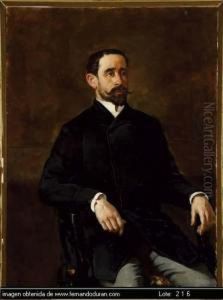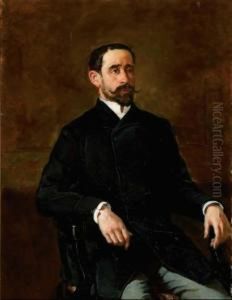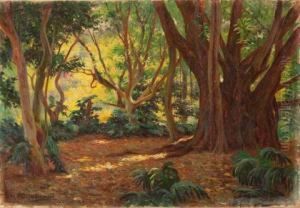Manuel Villegas Brieva Paintings
Manuel Villegas Brieva was a Spanish painter associated with the impressionist and realist movements of the late 19th and early 20th centuries. Born on August 28, 1862, in Granada, Spain, he developed an interest in art at an early age and pursued his passion by studying at the School of Fine Arts in Granada. His talent was evident, and he furthered his studies at the Royal Academy of Fine Arts of San Fernando in Madrid, where he was influenced by the works of contemporary Spanish artists.
Villegas Brieva's body of work often depicted scenes of daily life, landscapes, and historical subjects, characterized by a sensitive use of light and color. His style evolved over his career, showing the influence of various artistic movements, but he remained particularly drawn to capturing the effects of light, much like the French Impressionists. His works were marked by a loose brushwork and a vibrant palette that suggested the transient moments of everyday scenes.
Despite his alignment with impressionist techniques, Villegas Brieva also produced works that reflected the realist tradition, emphasizing the accurate depiction of subjects without idealization. He was skilled in both genres, and his paintings often evoked a sense of immediacy and intimacy. Throughout his career, he participated in numerous exhibitions and received several honors and awards, which helped to establish his reputation in the art world.
Manuel Villegas Brieva's contribution to Spanish art was significant, and he is considered an important figure in the transition between traditional and modern painting in Spain. His legacy is preserved through his works, which are held in various private collections and museums, including the Prado Museum in Madrid. He died on December 26, 1925, in Madrid, leaving behind a rich oeuvre that continues to be appreciated for its technical quality and emotive power.


